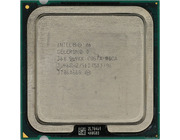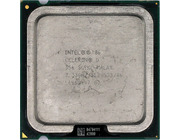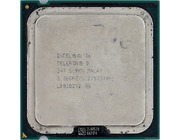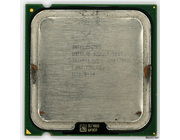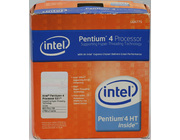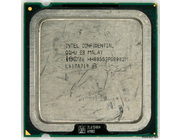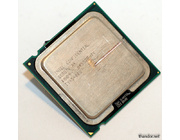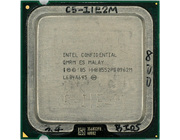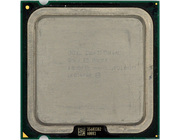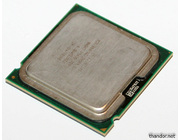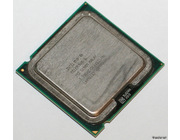Die-shrink of the Prescott core (90nm). Two advantages are: cheaper to manufacture for Intel due the smaller die-size and lower power consumption plus higher clock frequencies.
The Cedar Mill core is used in both the Celeron D as the Pentium 4 processors. These processors run fairly cool and can reach high clock frequencies. Overclockers have used Cedar Mill based Celeron D's to overclock them over 8GHz.
Intel released the Cedar Mill in early 2006; six months before the release of the Core 2 Duo. Originally Cedar Mill wouldn't have been the successor of Prescott. A processor with codename 'Tejas' would have been but was cancelled because of mediocre performance and a very high heat output. Rumors are that Tejas was cancelled just weeks before the first A0-samples of Tejas would have been manufactured.
The 'Cedar Mill' core was released on January 5, 2006; about half a year before the Core 2 Duo hit the market. Basically this 3GHz Pentium 4 631 is a die-shrink of the Prescott-core from 2004 (but with 2MB L2-cache). Sometimes it's said that technology development continues at a rapid pace but this particular Pentium 4 shows it isn't always the case. Yes, improvements are made but performance-wise this CPU isn't much faster than the top-of-the-line 3.06GHz Pentium 4 from late 2002. This particular Pentium 4 631 is made in the 39th week of 2007: that's five years later without much improvement.
Of course in this time-frame the Pentium 4 was degraded to the budget platform since the Core 2 Duo took over the high-end platform. Nevertheless in any case I would never have recommended buying this old technology new in 2007. Eventually this one never sold to a customer because the box has never been opened. > Read more
A cool(er) running Cedar Mill processor on 65nm. Due the 'die-shrink' the CPU is more energy efficient and can reach higher clock frequencies. An extra 256KB L2 cache (512KB in total) gives a slight performance boost as well.
In the overclockers scene these Cedar Mill Celeron's are interesting because they can achieve impressive clock frequencies using extreme cooling methods. Overclockers like 'duck' and 'TaPaKaH' reached 8320.4MHz (with Celeron D 360) and 8308.94 (with Celeron D 352) respectively. > Read more
